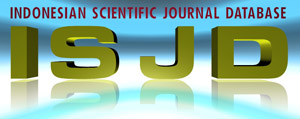CREATIVE INDUSTRIES AND MSME STRATEGIES THROUGH OPTIMIZING HUMAN RESOURCES IN UTILIZING DEMOGRAPHIC BONUSES BY USING THE TQM METHOD
DOI:
https://doi.org/10.23887/jish-undiksha.v10i2.33560Keywords:
Creative Industries, MSME, Demographic Bonus, TQMAbstract
Indonesia is predicted to get a demographic bonus in 2020-2030. A demographic bonus will be beneficial if Indonesia's human development index (HDI) is high quality. In ASEAN, HDI Indonesia ranks 6th out of 10 countries. The government is intensively pushing the creative industries and MSMEs to become agents of development to maximize the demographic bonus that Indonesia will face. The government is targeting at least 2020 to print 1,000 digital technopreneurs, one million farmers and fishers, and eight million SMEs going digital. The purpose of this study is to determine the general picture, the benefits, and the extent to which HR influences the creative industry and MSMEs. Total Quality Management is an approach that tries to maximize the competitiveness of organizations through several improvements: increasing human resources, the quality of products, services, processes, and the environment. The results of research with the application and implementation of the concept of Total Quality Management (TQM) in the creative industry and MSMEs that human resources have a significant role in increasing creativity to produce products according to market demand, optimizing the use of information and communication technology, and increasing creative industries with fellow creative industries as well as colleges.
References
Anggraini, N. (2008). “Industri Kreatif. Jurnal Ekonomi Desember, 13(3), 144–151.
Brah, S., & Lim, H. (2006). The effects of technology and TQM on the performance of logistics companies. International Journal of Physical Distribution & Logistics Management, 36(3), 192–209.
Bungin, B. (2010). Metodologi Penelitian Kualitatif: Komunikasi, Ekonomi, dan Kebijakan Publik serta Ilmu Sosial lainnya. Jakarta: Kencana Prenada Media.
Cemal, Z., & Sadikoglu, E. (2009). The relationship between total quality management (TQM) practices and organizational performance: An empirical investigation. International Journal of Production Economics, 11(3), 140–156.
Demirbag, M., Tatoglu, E., Tekinkus, M. And Zaim, S. (2006). An analysis of the relationship between TQM implementation and organizational performance: evidence from Turkish smes. Journal of Manufacturing Technology Management, 17(6), 829–847.
Gaspersz, V. (2005). Total Quality Management. Jakarta: PT. Gramedia Pustaka Utama.
Hudson-Smith,M.,&Smith,D. (2007). Menerapkan pengukuran kinerja yang selaras secara strategis di perusahaan kecil. Jurnal Internasional Ekonomi Produksi, 106 (2),393.
Hudson, M.,Smart, A., & Bourne, M. (2001). Teori dan praktek dalam pengukuran kinerja UKM sistem. Jurnal Internasional Operasi dam Manajemen Produksi, 21 (8), 1096-1115.
Notoatmodjo, S. (2003). Pengembangan Sumber Daya Manusia (PT. Rineka Cipta, ed.). Jakarta.
Pearce, J. A., & Robinson, R. B. (2007). Strategic Management, Formulation, Implementation, and Control. Boston: McGraw Hill Companies.
Ratnawati, Shinta. (2018). Ekonomi Kreatif dan Kaizen. Jurnal REKOMEN. Anom Pustaka : Yogyakarta.
Sila, I. (2007). Examining the effects of contextualfaktors on TQM and performance through thelens of organizational theory: an empirical study. Journal of Operations Management, 25(1), 83–109.
Simatupang T.M. (2007). Ekonomi Kreatif Berperan Penting. Pikiran Rakyat.
Sugiyono. (2008). Memahami Penelitian Kualitatif. Bandung: CV. ALFABETA.
Suyaman, D. . (2015). Kewirausahaan dan Industri Kreatif. Bandung: ALVABETA.
Van Gils, A. (2005). Manajemen dan Tata Kelola di UKM Belanda.Jurnal Manajemen Eropa,23(5), 583.
Vikaliana Resista. (2016). Model Pembinaan Umkm Industri Kreatif Sebuah Solusi Meningkatkan Daya Saing Global. Prosiding Seminar STIAMI, III(01), 92–102.
Wongboonsin, K. & P. (2003). First and Second Demographic Dividend. Thailand: Chulalongkorn University.
Downloads
Published
Issue
Section
License
Authors who publish with the Jurnal Ilmu Sosial dan Humaniora agree to the following terms:
- Authors retain copyright and grant the journal the right of first publication with the work simultaneously licensed under a Creative Commons Attribution License (CC BY-SA 4.0) that allows others to share the work with an acknowledgment of the work's authorship and initial publication in this journal.
- Authors are able to enter into separate, additional contractual arrangements for the non-exclusive distribution of the journal's published version of the work (e.g., post it to an institutional repository or publish it in a book), with an acknowledgment of its initial publication in this journal.
- Authors are permitted and encouraged to post their work online (e.g., in institutional repositories or on their website) prior to and during the submission process, as it can lead to productive exchanges, as well as earlier and greater citation of published work. (See The Effect of Open Access)


.png)
.png)













